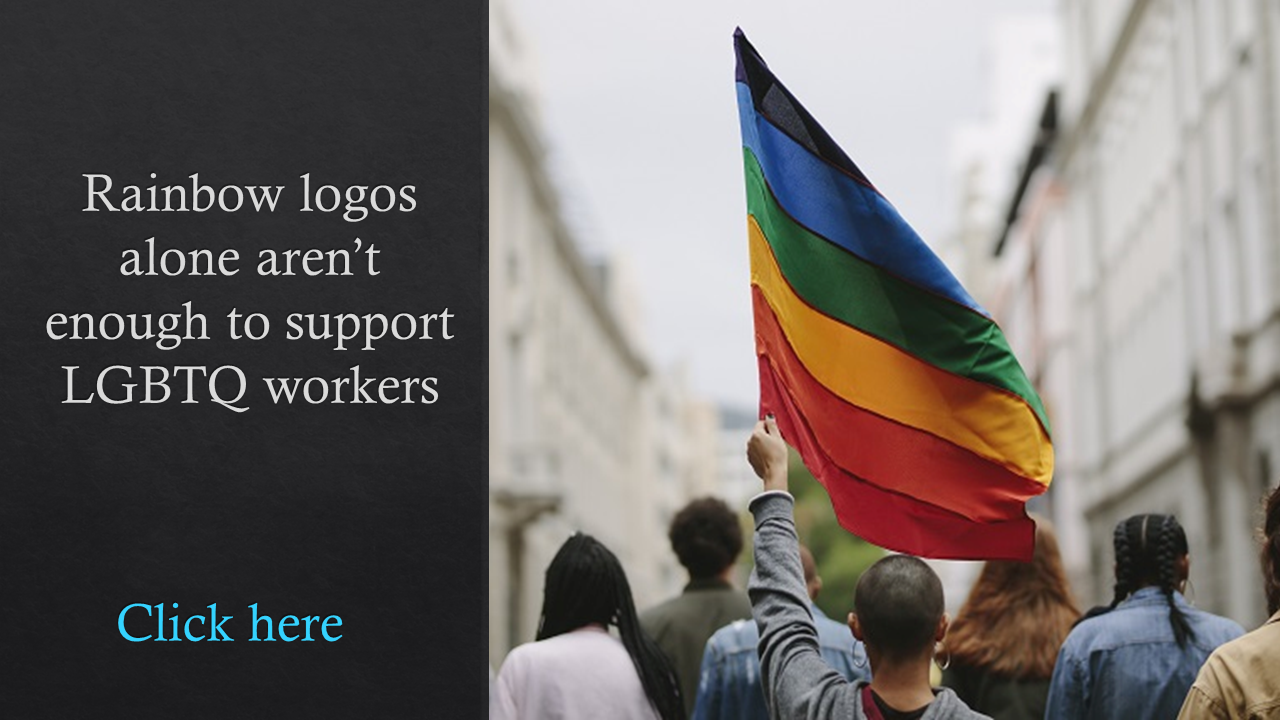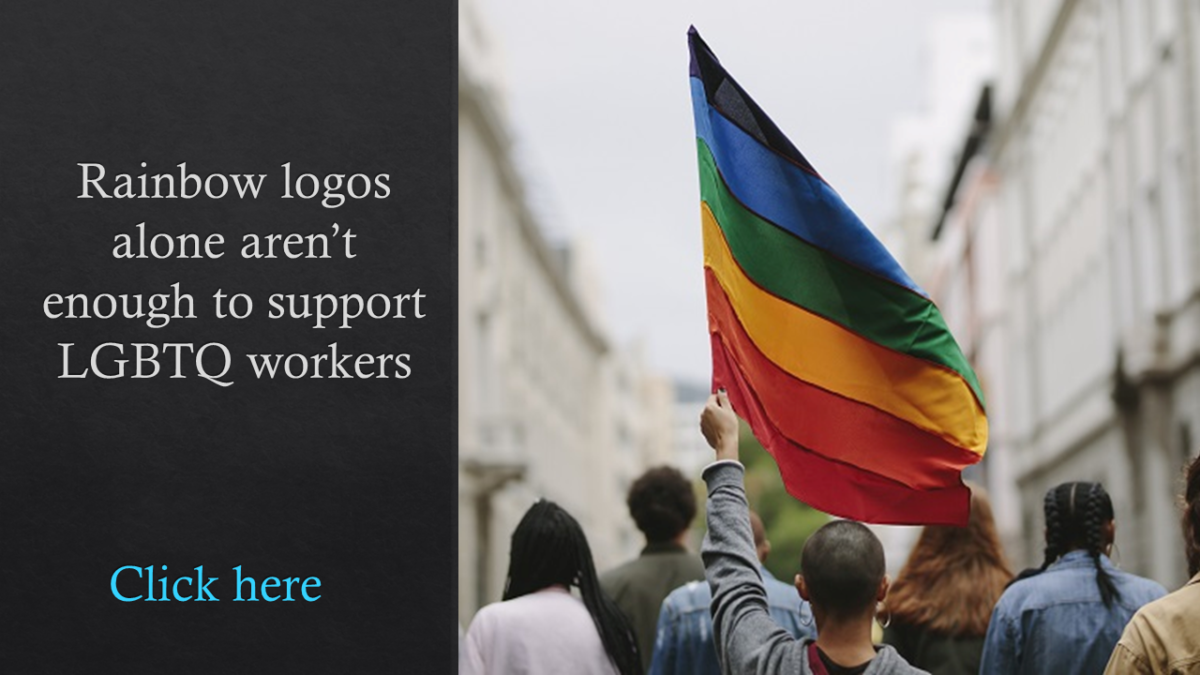June lands almost at the midpoint of a calendar year and offers an opportunity to pause and reflect. It’s such an important month when we celebrate Pride—honoring the anniversary of the Stonewall riots in 1969—and Juneteenth—commemorating the emancipation of enslaved people in the U.S. in 1865.
This year, these events take place a year after George Floyd’s death and coincide with the fifth anniversary of the Orlando Pulse nightclub mass shooting and the 100th anniversary of the Tulsa Race Massacre. And this is all against the backdrop of a global pandemic, an economic crisis, rising hate crimes and an ongoing reckoning on institutional racism.
It’s a lot to process and it presents leaders with a profound responsibility to acknowledge how their people are feeling and to cultivate an inclusive workplace culture.
I recently had the opportunity to interview Fran Katsoudas, Cisco’s executive EVP and chief people, policy & purpose officer, and my colleague Ellyn Shook, Accenture’s chief leadership and HR officer, on the role that executives must play in transforming the workplace for their workforces and for society.
Katsoudas and Shook are pioneers in this realm, cultivating the belief that, as Katsoudas has written, “Employees are more creative and productive when they feel heard, supported and able to play to their strengths. And when employees succeed, the business succeeds.”
Companies have made strides, to be sure—more than 1,600 have signed onto the CEO pledge on diversity and inclusion—but more work remains.
Research shows us that our LGBTQ co-workers are less satisfied than their colleagues at work and believe that their gender identity/expression or sexual orientation has slowed their career progress. And employees of color still report being treated unfairly based on their race or ethnicity. This matters to all workers: A recent survey found that 72% of respondents want their company to invest in creating and supporting an inclusive work environment.
In our discussion, Shook spoke eloquently about how the end game for inclusion goes far beyond helping all workers to bring their authentic selves to work. It extends—or should—to helping all workers bring their whole, authentic selves to their wholelives.
It’s a tall order, but one we must take on. How can leaders transform their aspirations into actions?
Listening and learning
Leaders have a responsibility to be active and inclusive nurturers of diverse talent—and that starts with understanding the challenge.
The terms “inclusion” and “diversity” are often thrown around interchangeably, but they are not the same, though they are related.
One way to think about it: Inclusion is how we feel—the sense of belonging. Diversity is who we are—our race and ethnicity, gender identity, gender expression, age, sexual orientation, disabilities and other unique characteristics.
There’s data behind the idea that inclusive and diverse teams are more creative and innovative: One recent study shows that companies with an inclusive approach to innovation create more high-quality ideas and achieve greater agility than their peers.
See also: When diversity isn’t enough—building the case for inclusion
Nothing is more important than a company’s community and culture. Inclusion and diversity must be top of mind in talent acquisition and recruitment from the directors’ board. And inclusion needs to extend across the organization—at all times and all levels.
Prioritizing people
Research from Accenture shows that three-quarters of workers surveyed believe their employer is responsible for their holistic wellbeing, but less than half of C-suites agree. Accenture’s Built for Change podcast explored this in detail, explaining how lifting up our people can also lift up organizational performance.
Workers are human beings first, and modern HR leaders know that leaving workers “Net Better Off” is good for business: Employers have a responsibility AND an opportunity to meet workers’:
- physical needs for health and safety;
- relational needs, by making everyone feel like part of a team;
- emotional and mental health needs; and
- need for purpose.
Leaders can address these needs in the context of creating an inclusive culture. If they haven’t made the leap yet, now is the time for a fundamental shift in worker and employer relationships.
Aligning on allyship
 Inclusion and diversity initiatives may only succeed if it’s a team effort. Organizations need to drive positive change and build a more equitable future.
Inclusion and diversity initiatives may only succeed if it’s a team effort. Organizations need to drive positive change and build a more equitable future.
Workers need leaders to support them in becoming allies, and there is a plethora of tools available. The Society for Human Resource Management (SHRM) just released a digital toolbox of resources to help its members promote real, lasting change in inclusion and diversity.
Measuring what matters
You can’t manage what you don’t measure. Leaders can increase transparency and trust by both tracking and making public metrics that show actual results. Beyond just setting targets for inclusion and diversity, sharing how we live up to our goals and what’s working, along with what’s challenging, builds credibility and fosters authenticity.
Companies have come a long way in terms of measuring diversity, but defining metrics against inclusion has remained elusive. Now, with all the technological advancements and the acceleration of a digital-first world in the pandemic, we are starting to see breakthroughs in behavioral science, measuring psychological safety and measuring inclusion.
Related: Abby Wambach to kick off HR Tech this year
The Gartner Inclusion Index is an excellent place to start. It identifies seven key elements of inclusion: fair treatment, integrating differences, decision-making, psychological safety, trust, belonging and diversity—and provides a survey around them.
The month of June is a good time for a midpoint reflection. And to review and share how we are leading our companies, our people and our communities to a more inclusive, innovative and optimistic future.
In the inspiring words of Dr. Martin Luther King Jr., “If you can’t fly, then run. If you can’t run then walk. If you can’t walk, then crawl. But whatever you do, you have to keep moving forward.”
We still have a way to go, but if the last year has taught us anything, it’s that we absolutely need to keep moving forward to create a better tomorrow.
